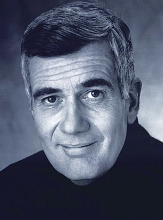August at The Walt Disney Family Museum features Walt Disney’s classic Fantasia, a musical masterpiece that features the talent of renowned conductor Leopold Stokowski, and led to the development of stereophonic surround sound. Fantasia (1940) screens daily through August at 11am, 1:30pm, and 4pm (except Tuesdays, and August 25 and 4pm showings on August 15, 18, and 24). Further program information and tickets are available at the Reception and Member Service Desk at the Museum, or online by clicking here. As Fantasia is a feature film made up of eight animated segments, we're taking the film apart to focus on each segment individually. Today, Academy Award-winning filmmaker John Canemaker has graciously penned this piece--which gives us a more intimate look at "The Pastoral Scene"--exclusively for Storyboard.
 Horses in varied fabulous forms populate the "Pastoral Symphony" sequence of Fantasia. Horned horses (Unicorns), winged horses (Pegasi), and half-human horses (Centaurs and their female counterparts Centaurettes) gambol in candy-colored Grant Wood-like landscapes, waterways, and airy cloudscapes above Mount Olympus alongside Zeus, Bacchus, Diana, Morpheus, and other Greco-Roman deities.
Horses in varied fabulous forms populate the "Pastoral Symphony" sequence of Fantasia. Horned horses (Unicorns), winged horses (Pegasi), and half-human horses (Centaurs and their female counterparts Centaurettes) gambol in candy-colored Grant Wood-like landscapes, waterways, and airy cloudscapes above Mount Olympus alongside Zeus, Bacchus, Diana, Morpheus, and other Greco-Roman deities.
Swiss-born Disney concept artist Albert Hurter (1883-1942), whose extensive knowledge of classical art proved invaluable to the art direction of Snow White and the Seven Dwarfs and Pinocchio, sought inspiration for Fantasia’s "Pastoral" in paintings of mythological subjects by the Symbolist Arnold Bocklin (1827- 1901), and Art Nouveau painter Franz von Stuck (1863-1928). Direct adaptations of their imagery can be seen in certain character model sheets drawn by Hurter.
He also found useful the brilliant fantasy drawings of anthropomorphized animals by the marvelous imaginative illustrator/painter Heinrich Kley (1863-1945). Adaptations of his expressive line drawings found their way into two other Fantasia sequences: the emoting, balletic elephants, hippos and alligators in the "Dance of the Hours" sequence and a terrifying gigantic devil in "Night on Bald Mountain".
Early model sheets (1938-1939) of Pastoral centaurs by Hurter and character model artist Martin Provensen (1916-1987) retain the robust, virile, swarthy sensuality of the inspirational art of Kley, Bochlin and Stuck.
 Unfortunately, these hearty designs did not translate to the screen. Time magazine, in an otherwise complimentary Fantasia cover story (November 18, 1940), complained about “calf-eyed centaurs” who make “Bacchus’ bacchanale look like a nursery lemonade party.”
Unfortunately, these hearty designs did not translate to the screen. Time magazine, in an otherwise complimentary Fantasia cover story (November 18, 1940), complained about “calf-eyed centaurs” who make “Bacchus’ bacchanale look like a nursery lemonade party.”
Animator Eric Larsen (1905-1988), who later became one of Walt’s famed “Nine Old Men,” thought the centaurs were “lousy to animate” because their design was “completely wrong.” Larsen blamed himself saying he “did not analyze it sufficiently to get a horse action in there. If you watch the front legs of those centaurs,” he said, “they have a certain human feeling, and it shouldn’t have been that way.” Forty years later Larsen continued to complain about his work on the centaurs. “If I had just thought about this then,” he lamented to a young trainee animator in 1980, “it would have been so much better.”
The Pegasus family in the Pastoral fared much better. Beautifully designed, their movements are elegant and assured. Perhaps their most impressive sequence is a glorious high-flying glide over and through cumulus cloudbanks. It is a tour de force of animation by Don Towsley (1912-1986) and seemingly effortless (but in reality complex) “camera” and background moves devised by layout artist Ken Anderson (1909-1993). In this brief moment, illusive fantasy comes to full and convincing life in stunningly free movements that perfectly match the magnificence of Beethoven on the soundtrack.
 John Canemaker has won an Academy Award®, an Emmy®, and a Peabody Award for his animation, and is an internationally-renowned animation historian and teacher. Canemaker is also a noted author who has written nine books on animation, as well as numerous essays, articles and monographs for The New York Times and The Wall Street Journal, among other publications.
John Canemaker has won an Academy Award®, an Emmy®, and a Peabody Award for his animation, and is an internationally-renowned animation historian and teacher. Canemaker is also a noted author who has written nine books on animation, as well as numerous essays, articles and monographs for The New York Times and The Wall Street Journal, among other publications.
He began teaching at New York University’s Tisch School of the Arts in 1980, and was one of the founders of the animation program. Canemaker is a full tenured professor, who became the program’s executive director in 1988, and served as Acting Chair of the NYU Undergraduate Film and Television Department in 2001-2002.
[Image above: Concept art (pastels on paper) of unicorns, satyrs, pegasus, and centaurettes frolicking in Fantasia's "Pastoral Symphony". Courtesy The Walt Disney Company, ©Disney. Second image: Character model statue of Bacchus and Jacchus as seen in Heinrich Kley: From Fantasy to Fantasia exhibition. Photo courtesy The Walt Disney Family Museum, ©Disney.]
